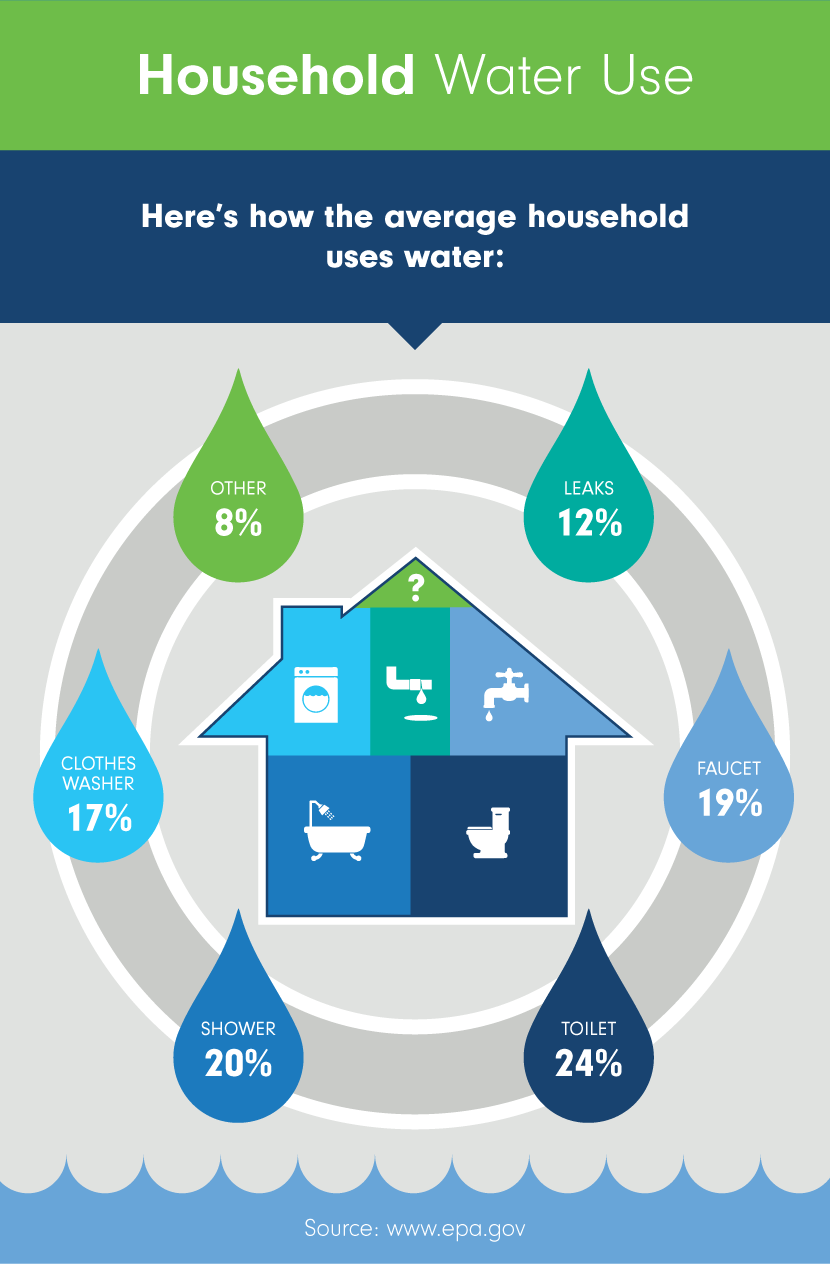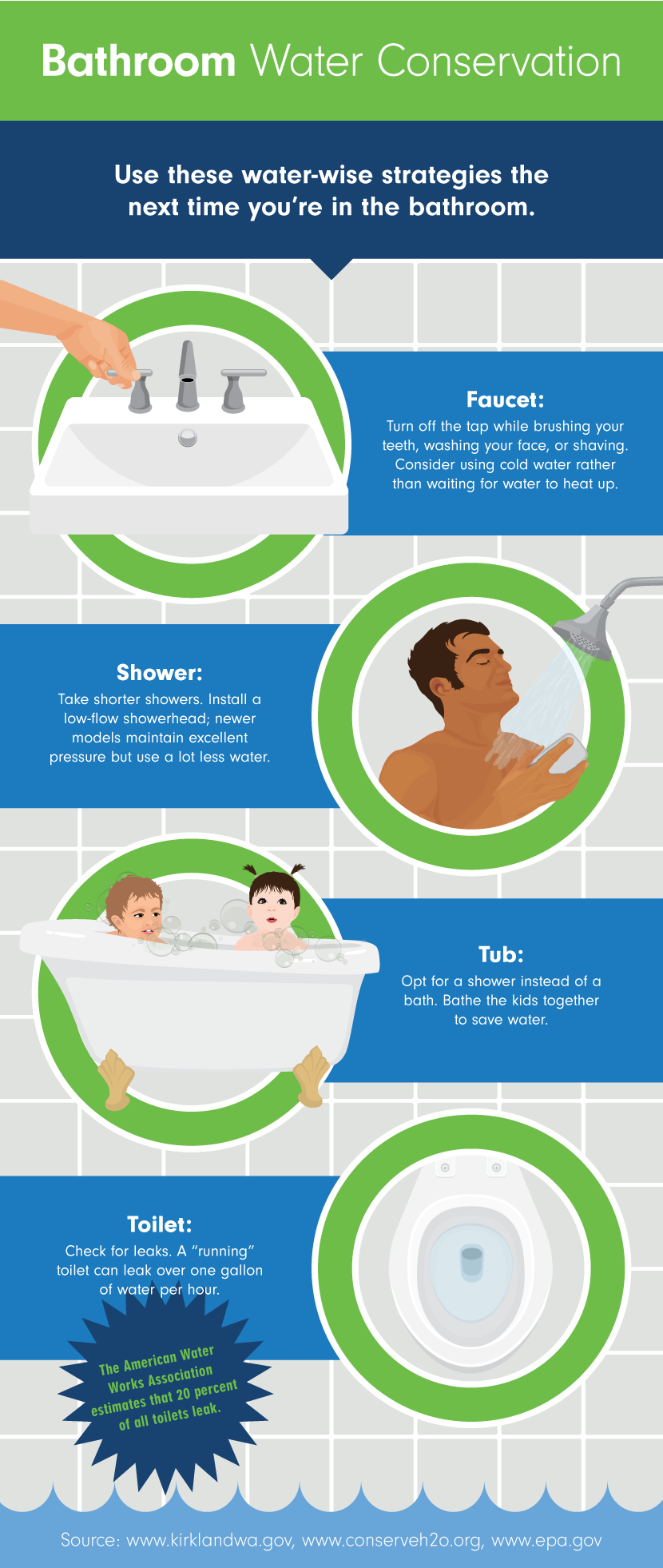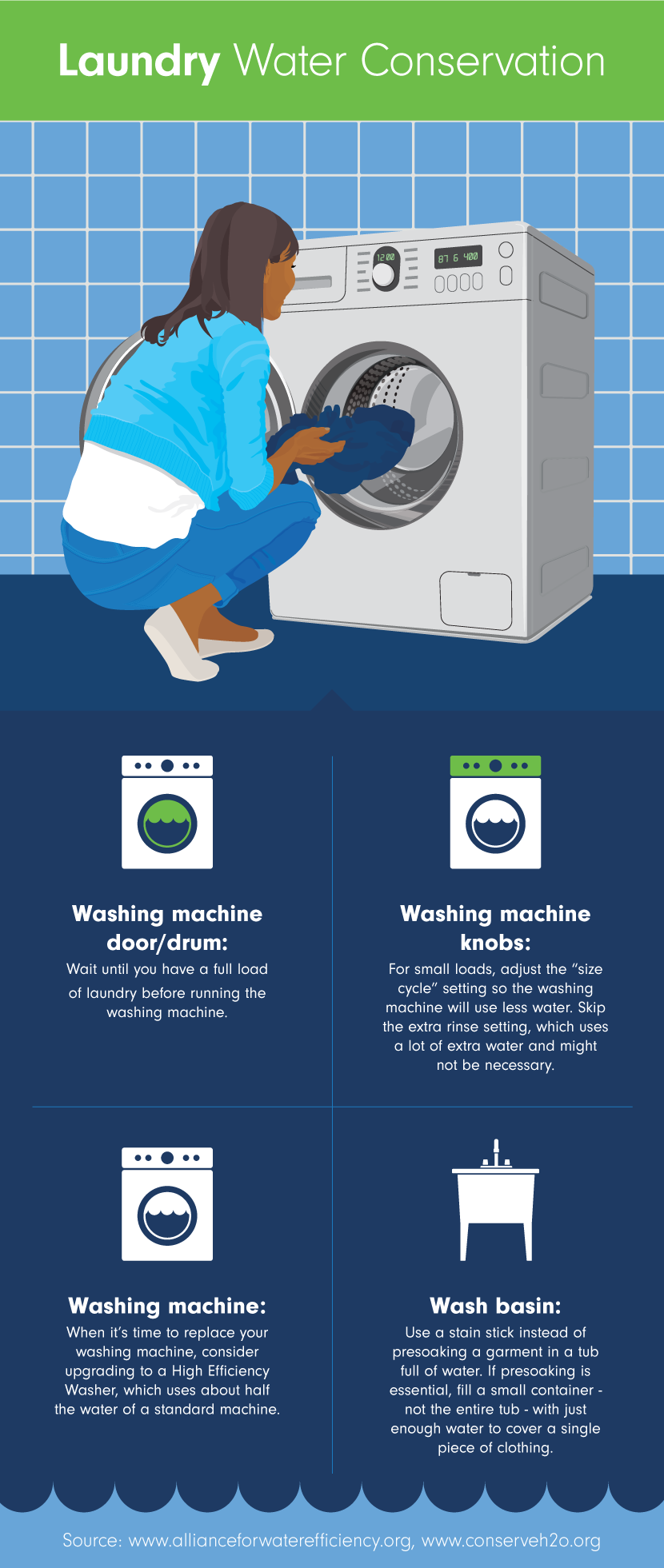Reduce Water Waste:
Simple Solutions for Using Less
You might not give much thought to the water that trickles down the drain each time you shower,
brush your teeth, flush the toilet, wash the dishes, or run a load of laundry though the washing machine.
But your daily routine uses a lot of water. According to the U.S. Environmental Protection Agency,
the average American family uses 300-plus gallons of water every single day.
Water is considered a non-renewable resource:
there is only so much of it on the planet, and no more is being added. To complicate matters,
about 99 percent of the water on earth is salt water, frozen in polar ice caps, or too inaccessible to
transport from its source to your home – and demand for the 1 percent available to homes, businesses and
institutions is going up. One report found that water shortages are expected in 40 states
in the next 10 years.

You can do your part to conserve a precious resource by using this
room-by-room guide to curbing water use at home.
Bathroom
In the average household, 63 percent of total water usage happens in the bathroom.
Being water wise in the bathroom doesn’t mean skipping on personal hygiene, however.
Turn off the tap: You don’t need to run the water while shaving or brushing your teeth.
Some older faucets use as much as 10 gallons of water per minute! Instead of running the water,
keep the faucet turned off until you’re ready to rinse.
Think twice before flushing: Even low-flow toilets use 1.28 gallons of water per flush.
It might not seem like much but it adds up. Flush all solid waste but consider flushing liquid waste
only a few times per day.

Install low-flow fixtures: Older faucets, showerheads, and toilets likely do not meet current efficiency
standards. The EPA has a water-saving program, WaterSense, which is similar to its Energy Star program –
products that are guaranteed to use less water than outdated fixtures bear the WaterSense label.
If new fixtures aren’t in the budget, however, install high-efficiency aerators on your faucets.
These can save one gallon of water per minute.
Skip the soak: Showers use less water than baths.
The average bathtub holds 36 gallons of water and the average water-wise showerhead uses just two
gallons per minute, according to USGS. If a family of four takes 10-minute showers instead of baths,
it’ll save 64 gallons of water per day, or 23,360 gallons of water per year.
Recycle water: To take water conservation to the next level,
put a bucket in the shower or tub and let it fill while you wait for the water
to heat or before you drain the tub. This “recycled” water can be used to water plants.
(It shouldn’t be used as drinking water.)
Kitchen
The kitchen faucet gets a workout: You wash your hands before handling food,
you wash fruits and vegetables, you fill a pot to boil water, you soak dirty dishes,
and you fill the sink with soapy water to wash pots and pans.
These processes are all important for food safety and hygiene but,
considering that you repeat them several times a day, they also use a lot of water.
Consider switching up your regular routine and using these water-saving strategies in the kitchen.
Skip the rinse: Rather than rinsing dirty dishes before loading them in the dishwasher,
simply scrape any remaining food into the trash. You’ll save up to 20 gallons of water and
your dishes will still be spick and span.

Load the dishwasher: Believe it or not, the dishwasher uses about 10 gallons
less water than washing dishes by hand does. Instead of standing at the sink and scrubbing,
sit back and let the dishwasher do the work.
Fill ‘er up: Your dishwasher uses the same amount of water whether it’s washing three plates or
a full load. Save water by running the dishwasher only when it’s full,
instead of turning it on every evening to clean half loads of dirty dishes.
Plug the sink: For those items that are not dishwasher safe and
must be washed by hand, put the plug in the sink and fill it with just enough water to clean the dishes.
Remember, it doesn’t take an entire sink full of sudsy water to wash a few wineglasses.
Defrost in the fridge: Rather than running frozen meat under hot water to thaw it out,
plan ahead and leave it in the refrigerator or, for last-minute meals, pop it in the microwave.
Laundry Room
It takes a lot of water to wash a single load of laundry.
The Alliance for Water Efficiency estimates that the average family of four generates 300 loads of laundry
per year and a regular washing machine uses approximately 12,000 gallons of water to clean those dirty
clothes. Save water by following this advice.
Wash only full loads: Like the dishwasher, your washing machine uses the same amount of water
whether it’s washing one pair of jeans or a full-sized load of laundry.
You’ll use less water by washing only full loads.
Choose the right setting: If washing just a few items is a must, adjust the “size cycle” to
reflect the size of the load, so the machine can adjust the amount of water it uses.

Skip the extra rinse: In most situations, an extra rinse is not necessary.
For items that are particularly soiled – such as a blanket covered in dog hair, or the bathmat –
shake them out outside before tossing them in the washing machine.
Upgrade the machine: A washing machine is a significant investment,
but an energy-efficient machine could pay for itself with savings in water and energy costs.
A high-efficiency washer uses about half of the water of a standard machine,
which could save about 6,000 gallons per year for a family of four.
Avoid presoaking: It might be tempting to fill the wash basin with water to presoak a stained garment,
but using a stain stick from the supermarket can be just as effective and requires no water at all.
To presoak a single piece of clothing, use a smaller container with room for just enough water and the
garment, rather than filling the entire wash basin.
Making a few small changes around the house can save significant amounts of water.
You’ll feel better about the positive impact the changes have on the environment as well as your next water bill.
Embed the article on your site

